
Amphipyra is a genus of moths in the family Noctuidae, the only genus in the tribe Amphipyrini.
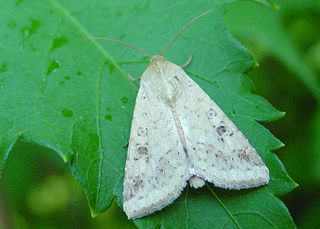
Helicoverpa is a genus of moths in the family Noctuidae first described by David F. Hardwick in 1965. Some species are among the worst Lepidopteran agricultural pests in the world, and three species migrate long distances both with and without human transportation, mixing resistance alleles along the way.
Camptoloma is a genus of moths in the family Nolidae. It was formerly incorrectly placed in Arctiidae.
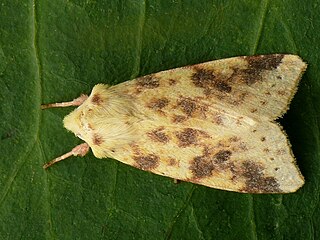
Xanthia is a genus of moths of the family Noctuidae.

Acidon is a genus of moths of the family Erebidae. The genus was erected by George Hampson in 1896.
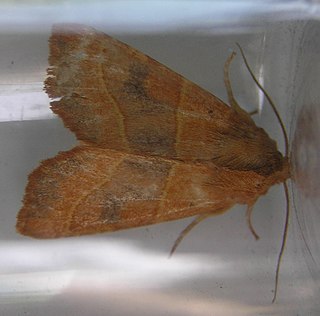
Atethmia is a genus of moths of the family Noctuidae. The genus was erected by Jacob Hübner in 1821.

Cryphia is a genus of moths of the family Noctuidae. The genus was erected by Jacob Hübner in 1818.

Zanclognatha is a genus of litter moths of the family Erebidae. The genus was erected by Julius Lederer in 1857.

Dasypolia is a genus of moths of the family Noctuidae. The genus was erected by Achille Guenée in 1852.

Drasteria is a genus of moths in the family Erebidae.
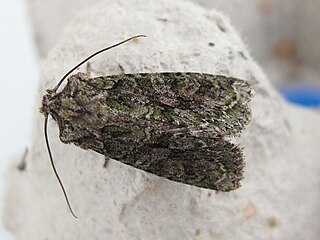
Dryobotodes is a genus of moths of the family Noctuidae raised by the English entomologist, William Warren in 1911.
Focillopis is a monotypic moth genus of the family Noctuidae. Its only species, Focillopis eclipsia, is known only from West Africa. Both the genus and species were first described by George Hampson in 1926.
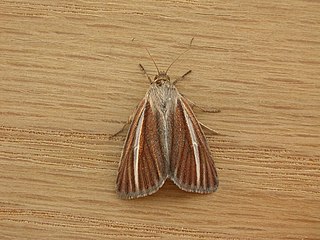
Heliocheilus is a genus of moths of the family Noctuidae. Former synonyms include Canthylidia.

Lithophane is a genus of moths of the family Noctuidae. They spend the winter as adults. Some species are capable of feeding on other caterpillars or on sawfly larvae, which is rather uncommon among Lepidoptera.

Lygephila is a genus of moths in the family Erebidae. The genus was erected by Gustaf Johan Billberg in 1820.

Mesogona is a genus of moths of the family Noctuidae.
Heliothis philbyi is a species of moth of the family Noctuidae. It is found in the Middle East, including Saudi Arabia, Iran and Oman.

Heliothinae is a small, cosmopolitan subfamily of moths in the family Noctuidae, with about 400 described species worldwide. It includes a number of economically significant agricultural pest species, such as Helicoverpa armigera and Helicoverpa zea.

Australothis volatilis, also known as the fuzzweed moth, is a species of moth in the family Noctuidae. It is endemic to New Zealand. This species has been classified as critically endangered by the Department of Conservation.

Ichneutica unica is a species of moth in the family Noctuidae. It is endemic to New Zealand and is found in the centre of the North Island and throughout the South Island. This moth is very similar in appearance to its close relatives Ichneutica phaula and Ichneutica toroneura. I. phaula can be distinguished as there is a difference in pectinations on the male antennae and I. toroneura can be distinguished as the black vein markings on the forewings is more uniform for that species in comparison to I. unica. I. unica is variable in appearance with the North Island specimens having a darker brown colour on the forewings and having a darker underside of the hindwings. This species inhabits open tussock grassland at various altitudes, coastal dunes, and inland volcanic dunes. Larvae feed on tussock grasses such as Chionochloa pallens and species in the genus Poa. Adult moths are on the wing from November to February and are attracted to both sugar and light traps.

















